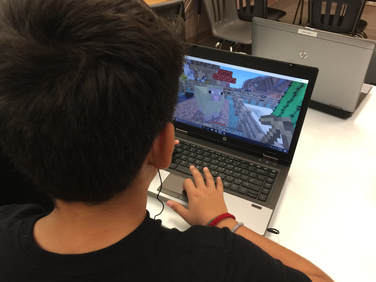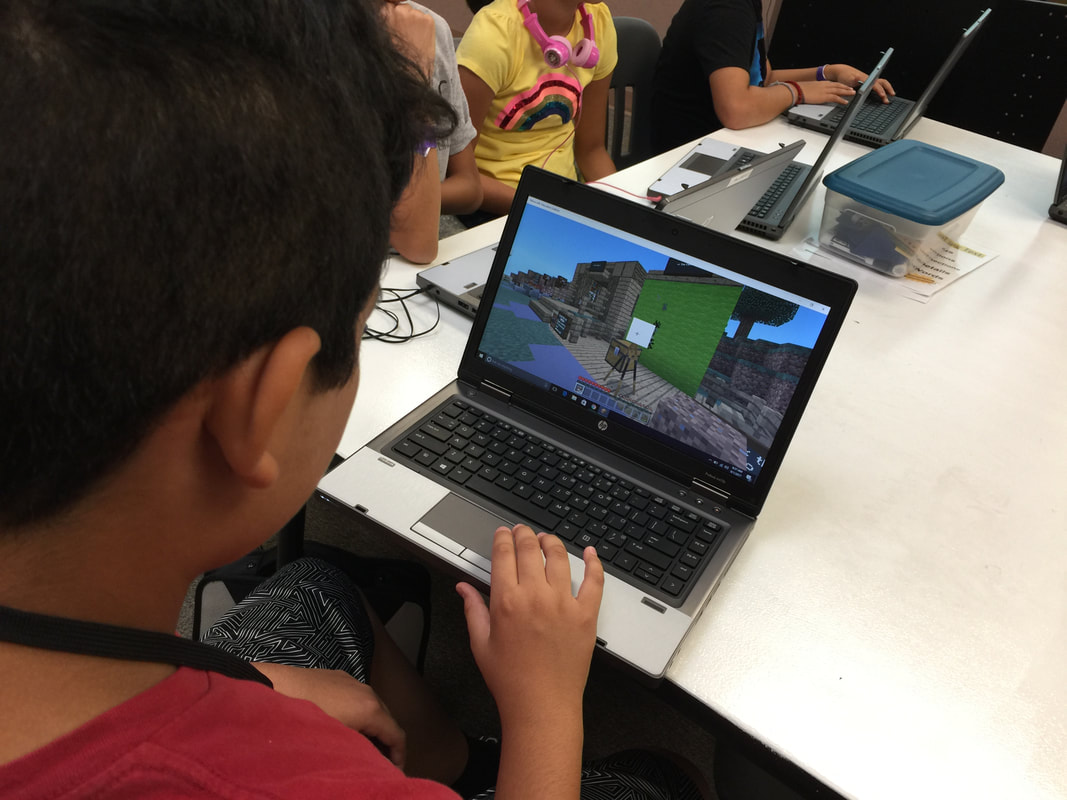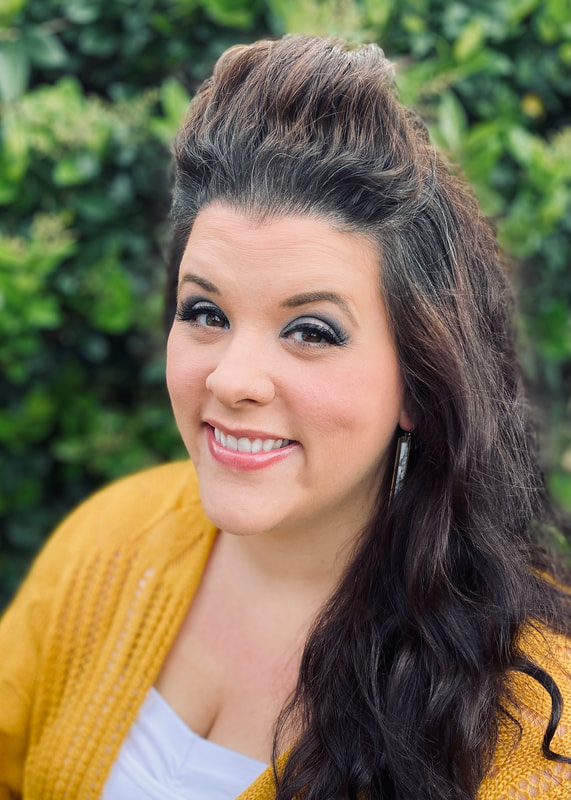|
One of the best perks about being a teacher is having FUN at work, and today was one of those days. I will admit that I was somewhat nervous to rollout Minecraft: Education Edition with my students. I've never used a commercial game for instruction before, let alone a virtual world. However, I've experienced the incredible potential for learning through interacting in a creative sandbox through my graduate students, and I am determined to let my students feel the same joy as they build understanding of content. The first step in that journey toward implementation was introducing kids to Tutorial World II. Perhaps the most valuable lesson I've learned when it comes to quest-based learning is that every quest needs to require a deliverable. The deliverable gives teachers a way to assess the student's learning and provides a jumping off point for the type of feedback that can hone understanding and/or confirm the concept connections that are made. So, I am applying this thinking to Minecraft as well by requiring a deliverable as a result of gameplay. Today, students logged on to their Minecraft-ready devices and generated a new Tutorial World II. Then, they logged on to Google Classroom to pick up their copy of the Google Doc deliverable. In the Google Doc, they documented their gameplay by taking screen captures of specific places, people, or accomplishments. The pairing of Minecraft and Google Docs worked well for the class, but most especially for the students who have little gaming experience. Though the Tutorial World II has many visual cues, including posters, signs, and boards with instructions, students still benefitted from the cues they received from the Doc. For example, students were able to anticipate what they should be looking to do or see next in the game, and that helped them stay on track. For the most experienced Minecrafters - and I discovered that I have some real MC rockstars in my classes - the Doc helped them to stay focused, too. There was a lot of temptation for experienced gamers to move off course, so having the task of screen capturing certain things was beneficial. The MC rockstars finished the Tutorial World first, as expected, but that actually led to a pretty cool development. The early-finishers just sort of naturally started mentoring the kids who were the newest to gaming. Watching the numerous helpful exchanges going on around the room, I issued a general invitation to wander the room the lend assistance as needed. The net effect was decreased anxiety in a few of the newbies and an overall collaborative spirit. Here's a clip of how gameplay went today: If you're a teacher looking to use Tutorial World II with your students, I'm happy to share the Google Doc deliverable I designed for my students. One of the challenges of implementing Minecraft is the fact that my students need to put aside their usual Chromebooks and utilize a roving cart of Minecraft-ready devices (laptops that run Windows 10). At the top of the document, there are instructions for how to take screen captures, because my students ordinarily use Chrome. So, other teachers could simply substitute their own screen capture instructions or remove them entirely.
0 Comments
"We all have our moments of brilliance and glory and this was mine..."
-from "The Great Mouse Plot" by Roald Dahl
This past spring, revolutionizing my classroom became my biggest priority. For the last decade, my classroom has served as a pilot for numerous technology initiatives in Palm Springs Unified. My beloved Room 208 was the first middle school 24/7 classroom in the district, the first 2:1 iPad classroom in the district, one of the first BYOD classrooms in the district, and one of the first 1:1 Chromebook classrooms, too. I've rolled out a lot of new technology over the years, and worked to troubleshoot the workflow on a variety of devices with kids of all achievement levels. Through it all, constructivism has remained the "true north" of my pedagogy, and students making their own meaning has always been the goal.
Over the years, I've increased the amount of choice my students have in terms of task, team, technique, and time. I've given back 20% of their "work week" for entirely self-directed, ungraded research projects, and I've made digital storytelling a pillar of my classroom. Student voices have flourished - there is some absolutely incredible student-created content on my YouTube channel to prove it. And yet... Something has been missing. I won't say that I've been searching for a silver bullet for all of the challenges we face in education - because no such remedy exists. But there has been a missing element in my classroom, a missing piece of my professional practice and I've been searching for and hoping to find. And I think, maybe, I finally have it. Last semester in my graduate program, a lot of my thinking about gamification was refined to a workable idea, a grand mashup of everything I've learned over the course of three classes that have dealt with gamified curriculum. My thoughts deal specifically with the value of quest-based learning and how I can integrate Minecraft into my curriculum. For my final project, I developed the vision for my classroom next year. I also began the practical work of building out the components I need in order to make it come alive. Being a digital storyteller first and foremost, of course I chose to share my ideas via YouTube. Take a look:
So, that's my vision in a nutshell. I've already finished building out the first unit for Social Studies in Rezzly's 3D Game Lab. The Minecraft tasks I've embedded are meaningful and will give kids an authentic opportunity to problem-solve and create. ETIS assures me that a cart of Minecraft-ready devices will be delivered in the fall, the Minecraft: Education Edition usernames will be set up, and my journey to become redefine my classroom with gamification will truly begin.
I am so excited!
One of the largest disparities students face today is the digital divide. Now more than ever, the future success of students depends on their exposure to technology in the classroom. Eighteenth century education reformer Horace Mann once said, “Education then, beyond all other devices of human origin, is the great equalizer…” These words have had a significant impact on our society. At the time they were issued, Mann was promoting the concept of free and public education for all. In today’s educational landscape, having public education is no longer the issue. Now, educators and reformers seek to address other issues of inequity.
Former National Education Association President Dennis Van Roekel repeated Mann’s words and refined them for the 21st century, saying, ““Education is the great equalizer…we must be committed to providing education equity and resources all students need to succeed. It is unacceptable to allow inadequate and inequitable distribution of resources to many predominately minority schools. The lack of resources fuels the disparities” (2010). The most glaring lack of resources Van Roekel refers to are technological in nature. The use of technology in schools is a powerful tool for change, particularly in schools that serve minority populations. The Public Policy Institute of California (2013) indicates that Internet access among Latino subgroups still lags behind the access rates of other ethnic groups. This means that the digital divide affects most of the students where I teach, and many teachers believe that that the fewer opportunities students have to utilize technology, the less likely they are to enter computer-related fields (Roblyer, 2016). The goal of educational technology is to level the playing field among students so that they may become productive members of society. Ensuring access not only to the technology itself, but also to skilled technology instruction, can transform the future of a generation. Through access and instruction, we build agency. The more students feel empowered to learn, share, and create, the more they are able to achieve. Perhaps the foremost reason for the equitable integration of technology is the desire for students to become creators of original content. At its heart, the integration of educational technology is a tool for social constructivism. Rather than passively consuming content that is published to the web via YouTube or social media, students must be given the opportunity to share their own voices. Through writing, producing, and publishing digital artifacts of their learning, students are able to connect with others across the globe. This can broaden their perspectives and provide an authentic audience for learning. By integrating technology into the curriculum, teachers can also give students the opportunity to develop information literacy skills. Being able to discern between credible sources and unreliable ones can have a major impact on how individuals access information. Living in the age of Google means that students must become equipped to deal with the massive amounts of information (and misinformation) available to them at the click of a browser tab. In addition, students must build an understanding of digital citizenship. Knowing how to be safe and productive in an online environment is crucial. The purposeful integration of technology across the curriculum is the key to ensuring the future success of our students. References |
Author: Jessica PackCalifornia Teacher of the Year. CUE Outstanding Educator 2015. DIGICOM Learning Teacher Consultant. 6th Grade Teacher. Passionate about gamification, Minecraft, digital story-telling, and fostering student voices. Download:Archives
June 2020
Categories
All
|



 RSS Feed
RSS Feed